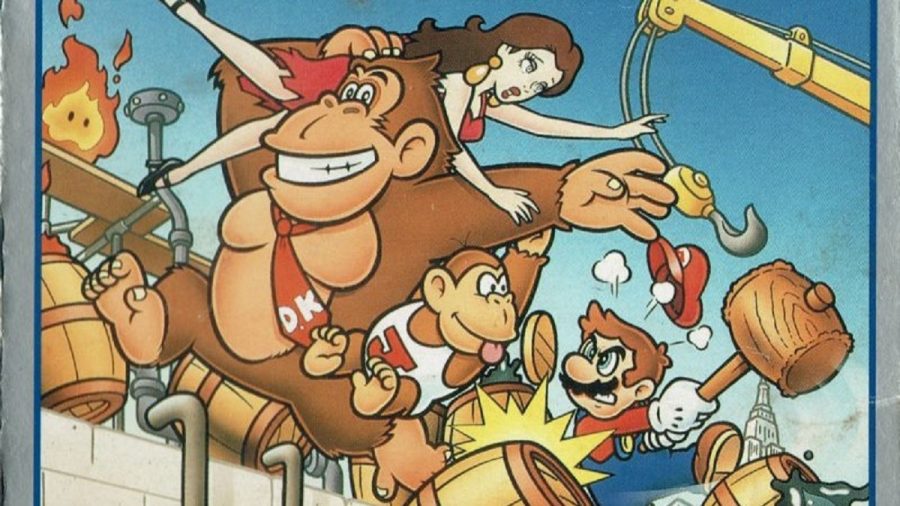Film theorist Laura Mulvey argues that Hollywood tends to portray the heterosexual men as dominant and more powerful than the female gender. She explains that this is done to appeal the heterosexual male audience as it empowers them. Meanwhile, the women are objectified where they become nothing but a sexual reward (with no input of any personality) for the male individuals. This heavily reinforces the gender stereotypes and ultimately leads to more gender inequality and sexual discrimination against women in society. (Durham and Kellner, 2006)
This blog will look at how the male gaze also exists in video games.
The Damsel in Distress
A common trope in video games is the damsel in distress and a popular example is Super Mario Bros. The game follows Mario (a male protagonist) who is tasked to rescue the princess from the forces of evil. As the game progresses Mario becomes heroic as he defeats several monsters. Meanwhile, Princess Peach remains as a weak and helpless character (with no personality) throughout the game. This trope has been in usage for every new Mario game in the past several decades.
Despite its popular usage, the damsel in distress trope in video games is problematic. Female characters such as Princess Peach is essentially an incentive for the player to beat the game. The trope heavily reinforces the gender stereotype where women are powerless and weak individuals who needs support from men everyday. Furthermore, the game simply portrays women as a reward; an object without showing what their personal belief and values are. Thus, this trope’s portrayal of the male protagonists as superior individuals is sexual discrimination against women.
Sexual Designs of Female Characters
Mulvey also mentions the term “scopophilia” which is defined as receiving sexual pleasure from looking. She explains that mainstream films tends to shoot the female leads in a sexual and suggestive way in order to satisfy the male audience. (Loreck, 2016)
One infamous example is the character Mai Shiranui and her suggestive visual design in the The King of Fighters series.
Her visual design is very revealing with little clothing (which explicitly highlights feminine features) compared to the male characters in game. This is a form of scopophilia as it’s specifically designed for the satisfaction of heterosexual male audience.
The sexual designs of female characters are a marketing scheme employed by the video game’s creators and is common for fighting games where its main target audience are heterosexual masculine men. This is an example of commodification of the female body in a sexual tone and its usage for selling products promotes this idea where women are sexual objects to men, thus exacerbates gender discrimination against women. (Ross, 2010)
To conclude, the male gaze has a significant presence in the world of video games. These ideas are dangerous especially to children who plays these games as they can form sexist ideas and perspectives of the female gender. Moreover, these portrayal of women and its continuous usage in the video game market further reinforces the gender stereotypes. These presence in video games highlights the unfortunate existence of sexism in our society.
References:
Loreck, J. (2016). Explainer: what does the āmale gazeā mean, and what about a female gaze?. The Conversation. Available from https://theconversation.com/explainer-what-does-the-male-gaze-mean-and-what-about-a-female-gaze-52486.
M Gigi Durham and Douglas Mackay Kellner. (2006). Media and cultural studies : keyWorks. Malden Etc.: Wiley-Blackwell.
Ross, K. (2010). Gendered media : women, men, and identity politics. Lanham, Md: Rowman & Littlefield Publishers.


A great topic! This is a very classic example. Games are one of the most important communication contents on media platforms, it has a wide audience and huge impact. In particular, the fact that most game developers are male, and there are more male than female players in the overall gaming area, has led to an increasing number of “male gaze” elements in games, which is not a positive phenomenon. It can be said that this situation not only reinforces the stereotype of women, but also limits the diversity of the gaming industry.
I really enjoyed reading your blog.I do agree with females being designed for the satisfaction of heterosexual male audience.It was interesting to read about the creators have done it in games as well.I really have a better understanding of male gaze after i read your blog. I feel that the male and female percentage is very different in the gaming category and the percentage of females is lesser and males being on the higher end is the reason why females are sexualized to satisfy the male audience and keep them engaged.
Also do you think it has increased with the society being modern or this has been happening since before?
Great blog, it does seem that looking at video games which have for most of its existence been a male-dominated market (both commercially and industry-wise.) Therefore, this has led to the commodification of women in these games. However, I do feel that this will change in the future as we see more girls and women become interested in not only playing video games but also being more involved in the development of these games.
Great Blog! The example here used of video games makes a lot of sense since in the past, video games had been targeted at a majority young heterosexual male audience, which has therefore led to developers of certain games leaning towards using Male Gaze to win over more sales. Another prime example of this is with the Lara Croft/Tomb Raider series, in which the protagonist, Lara Croft has been seen as a ‘Sex Symbol’ in video games by many. I enjoyed this piece